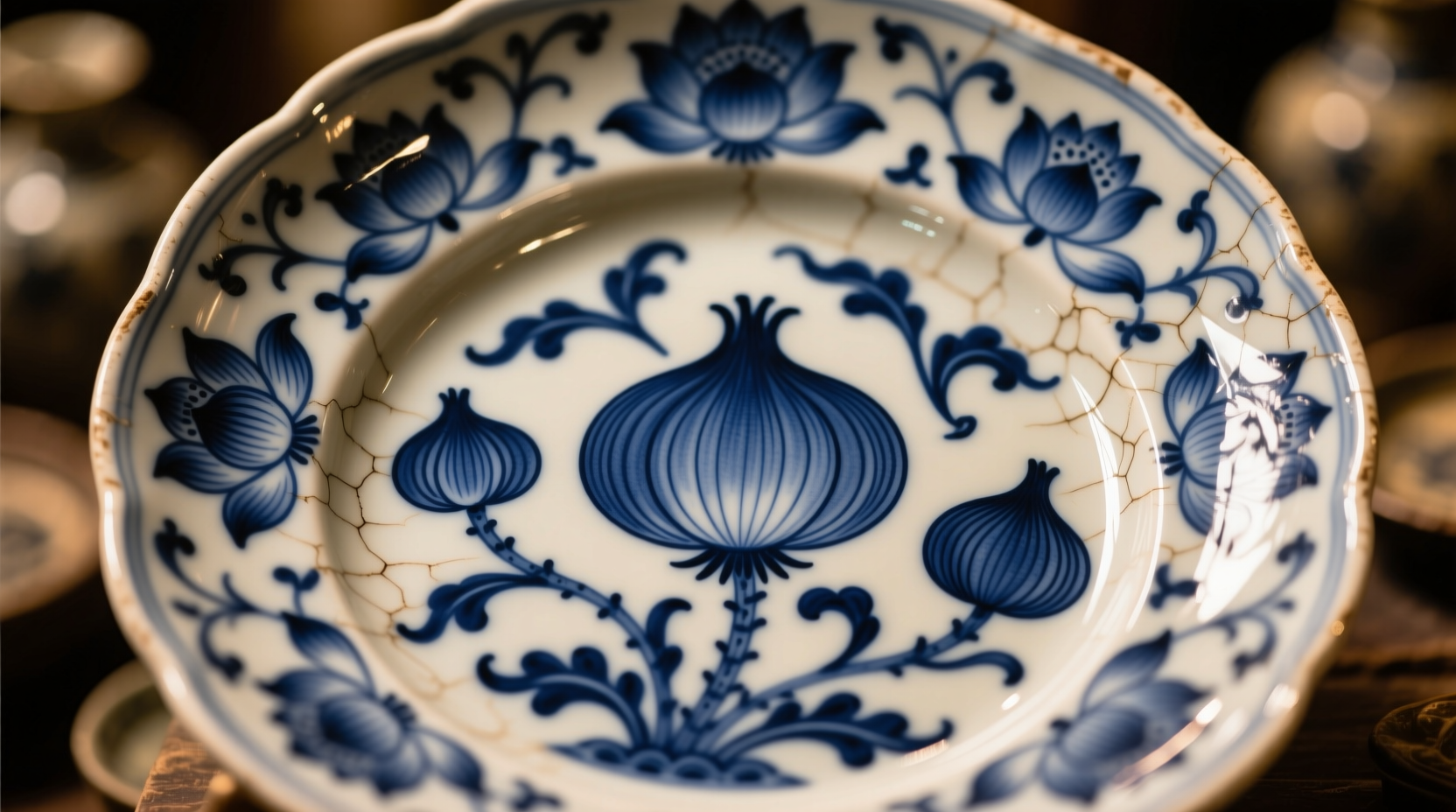Have you ever wondered why fine porcelain dishes feature what appears to be blue onions? You're not alone. This iconic pattern has graced dinner tables for nearly three centuries, yet most people—including many collectors—don't realize they've been misidentifying the central motif. Understanding the true story behind this design transforms how you see not just the porcelain, but the fascinating cultural exchange between East and West.
More Than Meets the Eye: What You're Actually Seeing
That distinctive "onion" shape dominating the pattern isn't an onion at all. European porcelain makers in the 1700s misinterpreted Chinese floral designs, particularly peonies and chrysanthemums, as onions. The "onion" is actually a composite of multiple Asian flowers rendered through European artistic sensibilities. Each element carries meaning:
- The central "onion" blossom represents prosperity and honor in Chinese symbolism
- Surrounding bamboo signifies resilience and longevity
- Willow trees denote eternal love
- Asymmetrical rock formations reflect traditional Chinese garden aesthetics
This misinterpretation wasn't accidental—it was creative adaptation. Without understanding Chinese symbolism, European artisans transformed what they saw into forms that resonated with their own cultural context, creating something entirely new yet deeply connected to its origins.

From Imperial China to European Dining Rooms: A Pattern's Journey
The story begins not in Germany, but in China's Jingdezhen porcelain capital during the Kangxi period (1662-1722). Chinese artisans perfected blue-and-white porcelain using cobalt oxide under a translucent glaze—a technique that would captivate European royalty.
| Period | Key Development | Manufacturing Center |
|---|---|---|
| 1662-1722 | Chinese blue-and-white porcelain reaches artistic peak | Jingdezhen, China |
| 1731 | Meissen develops formula for true porcelain | Meissen, Germany |
| 1739 | First "Zwiebelmuster" (onion pattern) created | Meissen, Germany |
| 1760-1800 | Pattern spreads across European porcelain factories | Multiple European centers |
| 1820s | Industrial production makes pattern widely accessible | Staffordshire, England |
The breakthrough came in 1739 when Johann Gregorius Höroldt, chief painter at Meissen, created the first official blue onion pattern. European porcelain makers faced a challenge: they couldn't replicate Chinese porcelain exactly because they lacked access to kaolin clay and didn't understand Chinese firing techniques. Instead, they created their own interpretation that became more popular in Europe than the original Chinese designs.
Spotting Authentic Pieces: What Collectors Need to Know
Not all blue onion patterns are created equal. Understanding these key differences helps distinguish valuable antique pieces from modern reproductions:
Manufacturing Era Characteristics
- Pre-1800 (Hand-painted originals): Slight irregularities in pattern, softer blue tones, thicker porcelain body
- 1800-1900 (Early industrial): Transfer-printed designs, more consistent patterns, thinner porcelain
- Post-1900 (Mass production): Perfectly uniform patterns, brighter cobalt blue, thinner walls
Authentic Meissen pieces from the 18th century feature the factory's distinctive crossed swords mark, though many European manufacturers created their own versions. The pattern's evolution reflects broader changes in manufacturing technology—from entirely hand-painted originals to transfer-printed designs that made the pattern accessible beyond aristocratic circles.
Where the Pattern Thrived (and Where It Didn't)
The blue onion pattern found its strongest foothold in specific cultural contexts while failing to gain traction elsewhere:
- Successful adoption: German-speaking regions, Scandinavia, and Eastern Europe where it became standard household porcelain
- Limited appeal: France and Italy where more elaborate rococo and neoclassical designs dominated
- Unexpected popularity: United States in the 19th century through English Staffordshire imports
- Cultural mismatch: Never gained significant traction in Asia where original Chinese designs remained preferred
This geographical distribution reveals how design preferences intersect with cultural identity. In regions with strong folk art traditions, the pattern's repetitive, symmetrical nature resonated with existing aesthetic values. In more fashion-forward markets, it was considered too traditional or even provincial.
Caring for Your Blue Onion Porcelain Collection
Whether you've inherited family pieces or started your own collection, proper care preserves both beauty and value:
- Cleaning: Hand wash with mild detergent—avoid dishwashers which can cause pattern deterioration over time
- Display: Keep out of direct sunlight to prevent cobalt blue from fading
- Storage: Use acid-free tissue between pieces with felt-lined shelves for protection
- Restoration: Consult a specialist for chips or cracks—improper repairs significantly reduce value
Remember that the pattern's durability varies by era. Pre-1800 hand-painted pieces have more resilient decoration than early transfer-printed versions, which can show wear on high-contact areas like plate rims.
Modern Interpretations: The Pattern's Enduring Legacy
Today, the blue onion pattern continues to evolve beyond traditional porcelain. Contemporary designers have reimagined it in unexpected materials and contexts:
- Textile designers incorporating the motif into modern home furnishings
- Ceramic artists creating abstract interpretations that emphasize the pattern's geometric qualities
- Graphic designers using elements in branding for businesses with European heritage
- Museum collections actively preserving both historical significance and contemporary adaptations
This evolution demonstrates the pattern's remarkable flexibility—it's simultaneously a historical artifact and a living design language that continues to inspire new generations of creators.











 浙公网安备
33010002000092号
浙公网安备
33010002000092号 浙B2-20120091-4
浙B2-20120091-4